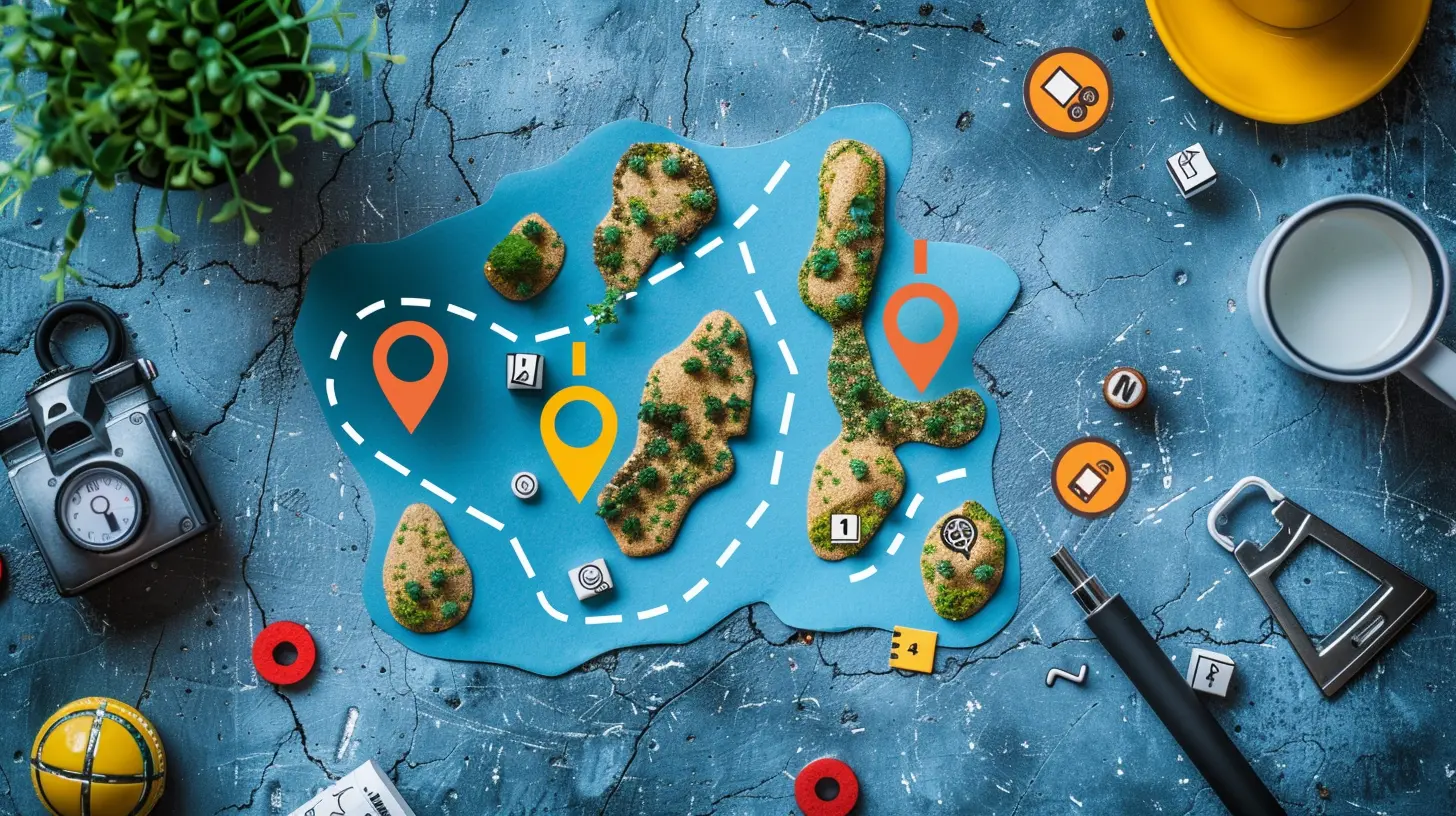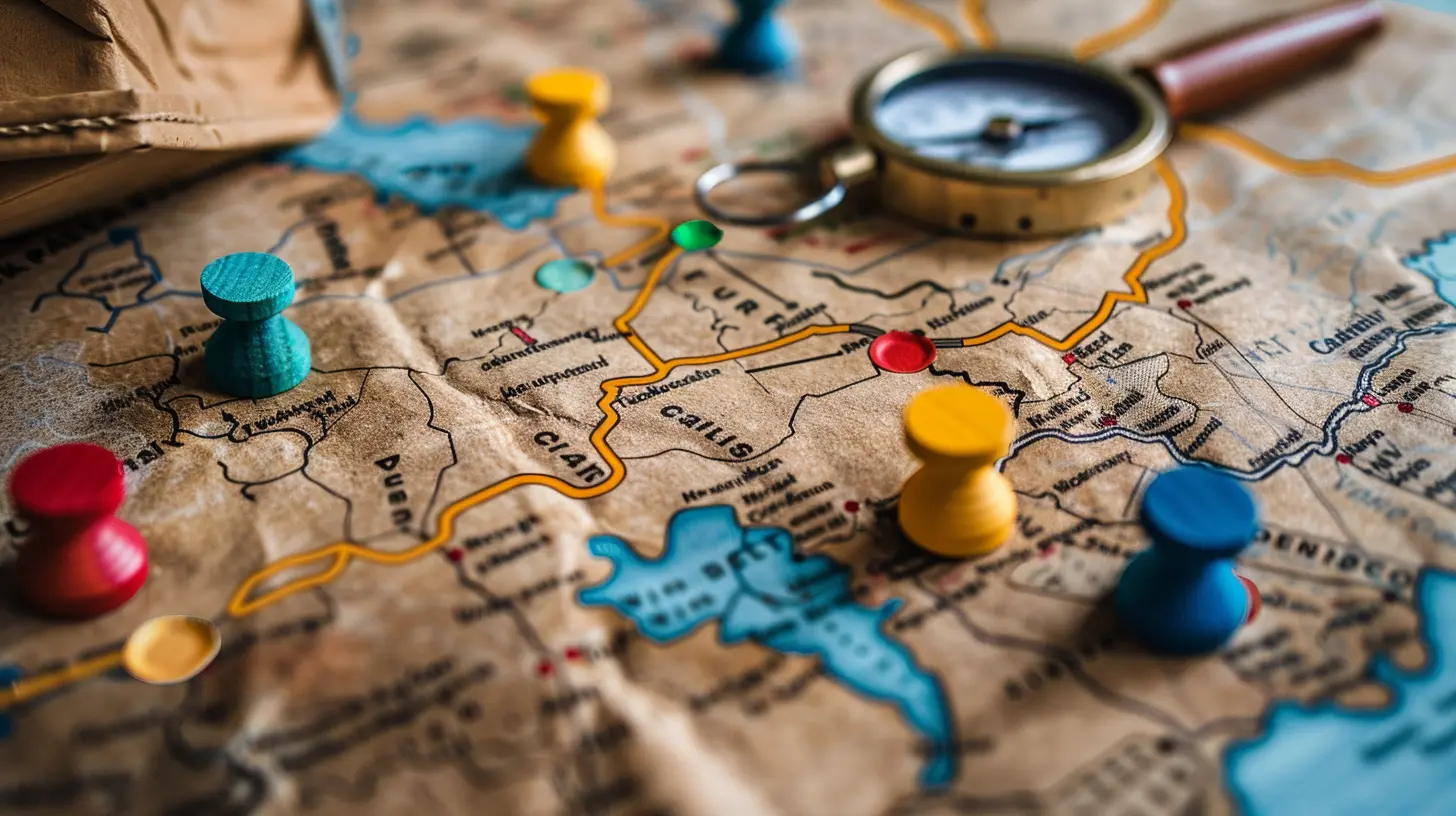Using Customer Journey Mapping to Drive Business Growth
30 October 2025
Let’s be real—if your customers are confused, frustrated, or uninspired when interacting with your brand, they’re not sticking around for long. That’s where Customer Journey Mapping comes in. It's like creating a GPS for your customer’s experience, helping you guide them from curious browser to loyal buyer without any hiccups.
In this article, we’re going to break down what customer journey mapping actually is, why it's a must-have tool in your business toolkit, and how it can seriously drive your business growth. Whether you're a startup founder, an eCommerce manager, or running a local brick-and-mortar shop, understanding—and applying—customer journey mapping is going to change how you do business.
What is Customer Journey Mapping?
Okay, let's start with the basics.Customer Journey Mapping (CJM) is a visual representation of the steps your customers go through when interacting with your business. From the moment they first hear about your brand to the moment they buy from you—and even after that—it’s all captured and analyzed.
Think of it like a storyboard for your customer’s experience. Each touchpoint, whether it’s your website, a product demo, a sales email, or a support interaction, is a frame in that story.
It’s not just about understanding where customers click or how long they stay. It’s about tapping into what they’re feeling, what they’re thinking, and—most importantly—what makes them take action.
Why Customer Journey Mapping Matters
Ever heard the saying, “You can’t fix what you can’t see”? That’s where CJM shines.Mapping the journey helps you step into your customer's shoes. It reveals pain points you never knew existed and shows you where your customer experience (CX) could use a serious tune-up.
Here’s why it’s a game-changer:
- Improves Customer Experience – Friction anywhere in the journey can lead to lost sales. Mapping helps you smooth out the bumps.
- Boosts Conversion Rates – When customers move through your funnel with ease, they buy more—simple as that.
- Informs Product & Service Improvements – Real feedback from the journey lets you fine-tune your offerings.
- Drives Customer Loyalty – Happy customers stick around and tell their friends.
- Aligns Teams – Everyone—from marketing to product to customer service—gets a shared view of the customer’s path.
The Key Stages of the Customer Journey
Before building your map, you’ve got to know the terrain. The customer journey usually includes five core stages:1. Awareness – They discover your brand (hello Google search, social media, word of mouth).
2. Consideration – They explore options, compare prices, read reviews.
3. Purchase – They finally click "Buy Now."
4. Retention – Post-purchase experience, customer service, follow-up emails.
5. Advocacy – If you nailed the experience, they’ll refer others, leave positive reviews, and become your brand cheerleaders.
By mapping out each stage, you can analyze what really happens at those crucial points—and where you might be dropping the ball.
How to Create a Customer Journey Map (Step-by-Step)
Ready to build your map? Here's a breakdown to get you rolling.1. Define Your Goals
Before diving in, ask yourself: What do you want this map to solve or reveal?Are you trying to increase conversions on a landing page? Reduce cart abandonment? Improve customer support response times?
Having clear goals keeps your map focused and actionable.
2. Create (or Refine) Your Buyer Personas
If you haven’t built buyer personas yet, now’s the time. These are semi-fictional profiles representing your ideal customers—based on real data and some educated guesses.You might have a "Budget-Conscious Brenda" or "Tech-Savvy Tim." Each persona will likely have a different journey, so map accordingly.
3. List Every Touchpoint
Touchpoints are the interactions a customer has with your brand. This includes:- Website visits
- Social media engagement
- Emails
- Live chat
- Product pages
- Customer service calls
Capture ALL of them. You’d be surprised how much you might miss without doing a full sweep.
4. Collect Customer Data (Don’t Assume)
Use surveys, interviews, support logs, and analytics tools to gather real insights. Here are a few ways to dig up the goods:- Ask customers about their experience via post-purchase surveys.
- Analyze website behavior with Google Analytics or Hotjar.
- Review support tickets to find common frustrations.
- Conduct one-on-one interviews when possible.
The more authentic the data, the better the map.
5. Identify Customer Emotions at Each Stage
Here's where it gets juicy. Start charting out how your customers feel at each stage.Are they excited? Confused? Frustrated? Empowered?
Use emotive data to find gaps. If your customer is thrilled at awareness but overwhelmed during checkout—that’s a red flag.
6. Map the Journey Visually
Now, it’s time to turn all that knowledge into a visual roadmap.You can use tools like:
- Miro
- Lucidchart
- Microsoft Visio
- Adobe XD
Or even good ol' paper and sticky notes if that’s your jam.
Plot the journey by stages, list out touchpoints, add customer emotions, and highlight pain points or opportunities for improvement.
7. Take Action on What You Discover
A map is only as good as what you do with it.- Did you find that checkout is clunky? Streamline it.
- Are customers bouncing after reading your product descriptions? Clarify them.
- Do too many people contact support with the same question? Add an FAQ section or a chatbot.
Use CJM as a living, breathing blueprint—not a one-time project—and continuously fine-tune your customer experience.
Real-World Example: Starbucks’ Customer Journey
Let’s break this down with a real-life example.Imagine someone hears about Starbucks from a friend. That’s the awareness stage. They check out the app—consideration—and see the mobile ordering feature. Impressed, they download it and place an order—purchase.
They get a follow-up email offering loyalty points for their next visit—retention. Eventually, they tell friends about how easy and convenient it is—advocacy.
Each phase is carefully crafted to be seamless, convenient, and a little bit addictive. That’s textbook customer journey mapping in action.
Common Mistakes to Avoid When Creating a Journey Map
Let’s be honest—there are a few traps people fall into when creating customer journey maps. Here are the big ones:🚫 Making Assumptions Instead of Using Data
Don’t guess what your customers feel—ask them.🚫 Mapping from the Business Perspective (Not the Customer’s)
It’s not about how you see your process—it’s about how they experience it.🚫 Ignoring Post-Purchase Experience
Once a customer buys, their journey isn’t over. Treat retention and loyalty like the goldmine they are.🚫 Keeping It Static
Your customers, market, and products evolve. Your map should too. Revisit it regularly.How Customer Journey Mapping Drives Business Growth
Let’s connect the dots now. How exactly does CJM help you grow your business? Here's how it moves the needle:1. Reduces Friction, Boosting Conversions
By identifying clunky processes or confusing messaging, you’re able to remove barriers that stop customers from buying.2. Enhances Personalization
When you understand their journey, you can tailor content, recommendations, and experiences to each stage. More relevance = more engagement.3. Increases Customer Lifetime Value
Retention is way cheaper than acquisition. By delivering a great experience throughout the journey, you keep customers coming back and spending more.4. Improves Brand Reputation
Customers appreciate businesses that “get” them. The smoother their journey, the more likely they are to leave positive reviews and make referrals.5. Aligns Internal Teams for Better Execution
Sales, marketing, product, support—they all get a 360-degree view of the customer journey. That means better coordination and smarter decisions.Final Thoughts
Customer Journey Mapping isn’t some fancy corporate buzzword—it’s a practical, powerful tool that helps you truly understand your customers and elevate their experience. When done right, it lights up the path to stronger sales, deeper loyalty, and explosive business growth.So, if you’ve been winging it up until now, it’s time to stop guessing and start mapping.
Need a tip to get started? Start small. Pick one persona or one product. Map that journey and build from there. The clarity and insights you'll gain can be the difference between surviving and thriving.
all images in this post were generated using AI tools
Category:
Business DevelopmentAuthor:

Ian Stone
Discussion
rate this article
1 comments
Knox Vaughn
Customer journey mapping is essential; it reveals insights that can significantly boost business growth.
November 2, 2025 at 3:39 AM

Ian Stone
Thank you for your insight! I completely agree—customer journey mapping is a powerful tool that uncovers valuable insights, ultimately driving business growth.


